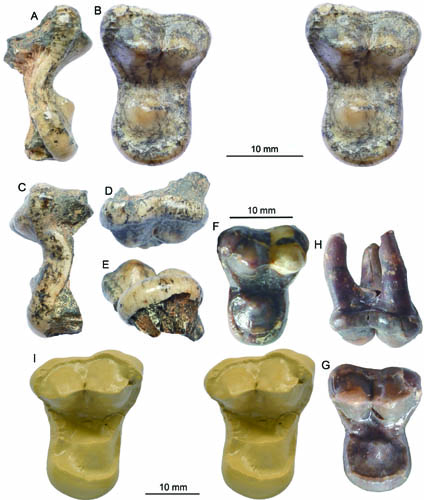
The new molar is strikingly similar to Haplocyonoides mordax and Temnocyon percussor with its dumbbell-shaped M1 outline, reduced parastyle, isolated protocone by a surrounding cingulum, and extreme reduction of pre- and postprotocristae. This molar is highly diagnostic of European haplocyonine or North American temnocyonine, two subfamilies of beardogs that have long been known in those continents but notably absent in Asia.
Temnocyoninae and Haplocyoninae are peculiar lineages of amphicyonids, with hypercarnivorous dentitions and in some species, digitigrade posture. Members of these groups typically have a very trenchant lower molar battery that align their main cusps in a single row to facilitate shearing function and associated narrow, high-crowned premolar series.
“Given the limited material at hand, we tentatively refer the new Chinese fossil to the European Haplocyonoides cf. H. mordax because of their similar size and age relationship”, said lead author Dr. WANG Xiaoming, a visiting professor of Institute of Vertebrate Paleontology and Paleoanthropology (IVPP) of the Chinese Academy of Sciences.
“If this identification is correct, our new record thus fills a large gap in the geographic distribution of the haplocyonines and represents an excursion of this rare subfamily from Europe, and confirms, once again, Asia has much to offer in our understanding of Holarctic zoogeography,” said WANG. He is also a senior curator of Natural History Museum of Los Angeles County.

Fig.1 Haplocyonoides cf. H. mordax (A−E) from Aoerban, Nei Mongol, Haplocyonoides mordax (F−H), and Temnocyon percussor (I) from Nebraska. (Image by WANG Xiaoming)

86-10-68597521 (day)
86-10-68597289 (night)

52 Sanlihe Rd., Xicheng District,
Beijing, China (100864)

